10.1E: Exercises
- Page ID
- 120522
\( \newcommand{\vecs}[1]{\overset { \scriptstyle \rightharpoonup} {\mathbf{#1}} } \)
\( \newcommand{\vecd}[1]{\overset{-\!-\!\rightharpoonup}{\vphantom{a}\smash {#1}}} \)
\( \newcommand{\id}{\mathrm{id}}\) \( \newcommand{\Span}{\mathrm{span}}\)
( \newcommand{\kernel}{\mathrm{null}\,}\) \( \newcommand{\range}{\mathrm{range}\,}\)
\( \newcommand{\RealPart}{\mathrm{Re}}\) \( \newcommand{\ImaginaryPart}{\mathrm{Im}}\)
\( \newcommand{\Argument}{\mathrm{Arg}}\) \( \newcommand{\norm}[1]{\| #1 \|}\)
\( \newcommand{\inner}[2]{\langle #1, #2 \rangle}\)
\( \newcommand{\Span}{\mathrm{span}}\)
\( \newcommand{\id}{\mathrm{id}}\)
\( \newcommand{\Span}{\mathrm{span}}\)
\( \newcommand{\kernel}{\mathrm{null}\,}\)
\( \newcommand{\range}{\mathrm{range}\,}\)
\( \newcommand{\RealPart}{\mathrm{Re}}\)
\( \newcommand{\ImaginaryPart}{\mathrm{Im}}\)
\( \newcommand{\Argument}{\mathrm{Arg}}\)
\( \newcommand{\norm}[1]{\| #1 \|}\)
\( \newcommand{\inner}[2]{\langle #1, #2 \rangle}\)
\( \newcommand{\Span}{\mathrm{span}}\) \( \newcommand{\AA}{\unicode[.8,0]{x212B}}\)
\( \newcommand{\vectorA}[1]{\vec{#1}} % arrow\)
\( \newcommand{\vectorAt}[1]{\vec{\text{#1}}} % arrow\)
\( \newcommand{\vectorB}[1]{\overset { \scriptstyle \rightharpoonup} {\mathbf{#1}} } \)
\( \newcommand{\vectorC}[1]{\textbf{#1}} \)
\( \newcommand{\vectorD}[1]{\overrightarrow{#1}} \)
\( \newcommand{\vectorDt}[1]{\overrightarrow{\text{#1}}} \)
\( \newcommand{\vectE}[1]{\overset{-\!-\!\rightharpoonup}{\vphantom{a}\smash{\mathbf {#1}}}} \)
\( \newcommand{\vecs}[1]{\overset { \scriptstyle \rightharpoonup} {\mathbf{#1}} } \)
\( \newcommand{\vecd}[1]{\overset{-\!-\!\rightharpoonup}{\vphantom{a}\smash {#1}}} \)
Exercises
In Exercises 1 - 4, convert the angles into the DMS system. Round each of your answers to the nearest second.
- \(63.75^{\circ}\)
- \(200.325^{\circ}\)
- \(-317.06^{\circ}\)
- \(179.999^{\circ}\)
In Exercises 5 - 8, convert the angles into decimal degrees. Round each of your answers to three decimal places.
- \(125^{\circ} 50'\)
- \(-32^{\circ} 10' 12''\)
- \(502^{\circ} 35'\)
- \(237^{\circ} 58' 43''\)
In Exercises 9 - 28, graph the oriented angle in standard position. Classify each angle according to where its terminal side lies and then give two coterminal angles, one of which is positive and the other negative.
- \(330^{\circ}\)
- \(-135^{\circ}\)
- \(120^{\circ}\)
- \(405^{\circ}\)
- \(-270^{\circ}\)
- \(\dfrac{5\pi}{6}\)
- \(-\dfrac{11\pi}{3}\)
- \(\dfrac{5\pi}{4}\)
- \(\dfrac{3\pi}{4}\)
- \(-\dfrac{\pi}{3}\)
- \(\dfrac{7\pi}{2}\)
- \(\dfrac{\pi}{4}\)
- \(-\dfrac{\pi}{2}\)
- \(\dfrac{7\pi}{6}\)
- \(-\dfrac{5\pi}{3}\)
- \(3\pi\)
- \(-2\pi\)
- \(-\dfrac{\pi}{4}\)
- \(\dfrac{15\pi}{4}\)
- \(-\dfrac{13\pi}{6}\)
In Exercises 29 - 36, convert the angle from degree measure into radian measure, giving the exact value in terms of \(\pi\).
- \(0^{\circ}\)
- \(240^{\circ}\)
- \(135^{\circ}\)
- \(-270^{\circ}\)
- \(-315^{\circ}\)
- \(150^{\circ}\)
- \(45^{\circ}\)
- \(-225^{\circ}\)
In Exercises 37 - 44, convert the angle from radian measure into degree measure.
- \(\pi\)
- \(-\dfrac{2\pi}{3}\)
- \(\dfrac{7\pi}{6}\)
- \(\dfrac{11\pi}{6}\)
- \(\dfrac{\pi}{3}\)
- \(\dfrac{5\pi}{3}\)
- \(-\dfrac{\pi}{6}\)
- \(\dfrac{\pi}{2}\)
In Exercises 45 - 49, sketch the oriented arc on the Unit Circle which corresponds to the given real number.
- \(t=\frac{5 \pi}{6}\)
- \(t=-\pi\)
- \(t = 6\)
- \(t = -2\)
- \(t = 12\)
- A yo-yo which is 2.25 inches in diameter spins at a rate of 4500 revolutions per minute. How fast is the edge of the yo-yo spinning in miles per hour? Round your answer to two decimal places.
- How many revolutions per minute would the yo-yo in exercise 50 have to complete if the edge of the yo-yo is to be spinning at a rate of 42 miles per hour? Round your answer to two decimal places.
- In the yo-yo trick ‘Around the World,’ the performer throws the yo-yo so it sweeps out a vertical circle whose radius is the yo-yo string. If the yo-yo string is 28 inches long and the yo-yo takes 3 seconds to complete one revolution of the circle, compute the speed of the yo-yo in miles per hour. Round your answer to two decimal places.
- A computer hard drive contains a circular disk with diameter 2.5 inches and spins at a rate of 7200 RPM (revolutions per minute). Find the linear speed of a point on the edge of the disk in miles per hour.
- A rock got stuck in the tread of my tire and when I was driving 70 miles per hour, the rock came loose and hit the inside of the wheel well of the car. How fast, in miles per hour, was the rock traveling when it came out of the tread? (The tire has a diameter of 23 inches.)
- The Giant Wheel at Cedar Point is a circle with diameter 128 feet which sits on an 8 foot tall platform making its overall height is 136 feet. It completes two revolutions in 2 minutes and 7 seconds. Assuming the riders are at the edge of the circle, how fast are they traveling in miles per hour?
- Consider the circle of radius \(r\) pictured below with central angle \(\theta\), measured in radians, and subtended arc of length \(s\). Prove that the area of the shaded sector is \(A = \frac{1}{2} r^{2} \theta\).
(Hint: Use the proportion \(\frac{A}{\text{area of the circle}} = \frac{s}{\text{circumference of the circle}}\).)
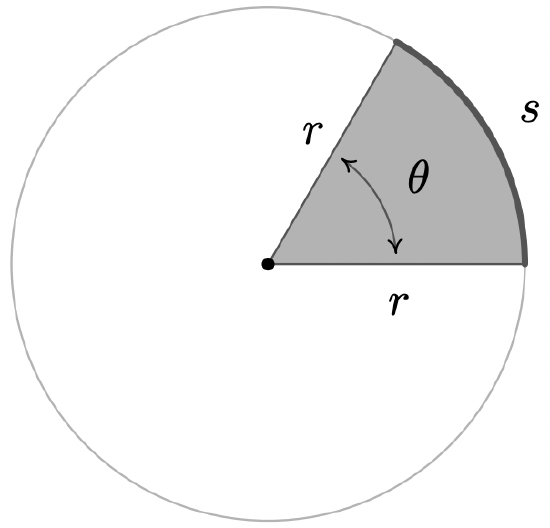
In Exercises 57 - 62, use the result of Exercise 56 to compute the areas of the circular sectors with the given central angles and radii.
- \(\theta = \dfrac{\pi}{6}, \; r = 12\)
- \(\theta = \dfrac{5\pi}{4}, \; r = 100\)
- \(\theta = 330^{\circ}, \; r = 9.3\)
- \(\theta =\pi, \; r = 1\)
- \(\theta = 240^{\circ}, \; r = 5\)
- \(\theta = 1^{\circ}, \; r = 117\)
- Imagine a rope tied around the Earth at the equator. Show that you need to add only \(2\pi\) feet of length to the rope in order to lift it one foot above the ground around the entire equator. (You do NOT need to know the radius of the Earth to show this.)
- With the help of your classmates, look for a proof that \(\pi\) is indeed a constant.
Answers
- \(63^{\circ} 45'\)
- \(200^{\circ} 19' 30''\)
- \(-317^{\circ} 3' 36''\)
- \(179^{\circ} 59' 56''\)
- \(125.833^{\circ}\)
- \(-32.17^{\circ}\)
- \(502.583^{\circ}\)
- \(237.979^{\circ}\)
- \(330^{\circ}\) is a Quadrant IV angle coterminal with \(690^{\circ}\) and \(-30^{\circ}\)
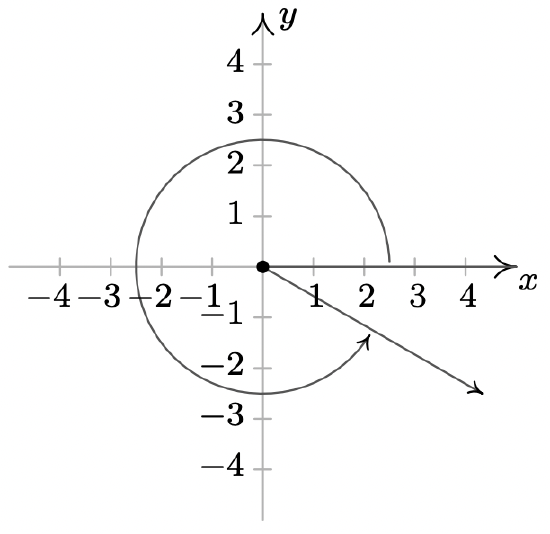
- \(-135^{\circ}\) is a Quadrant III angle coterminal with \(225^{\circ}\) and \(-495^{\circ}\)
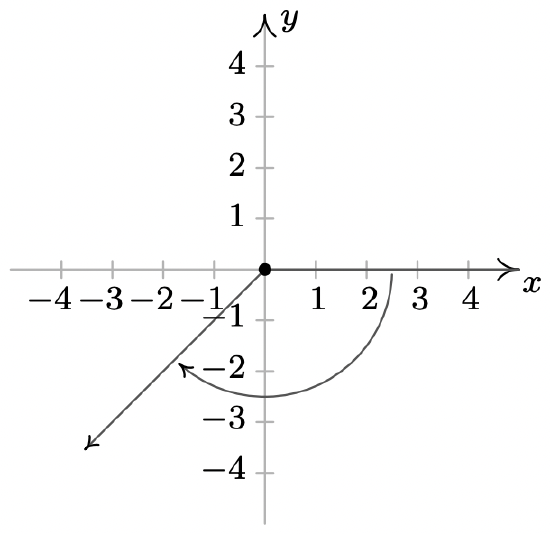
- \(120^{\circ}\) is a Quadrant II angle coterminal with \(480^{\circ}\) and \(-240^{\circ}\)
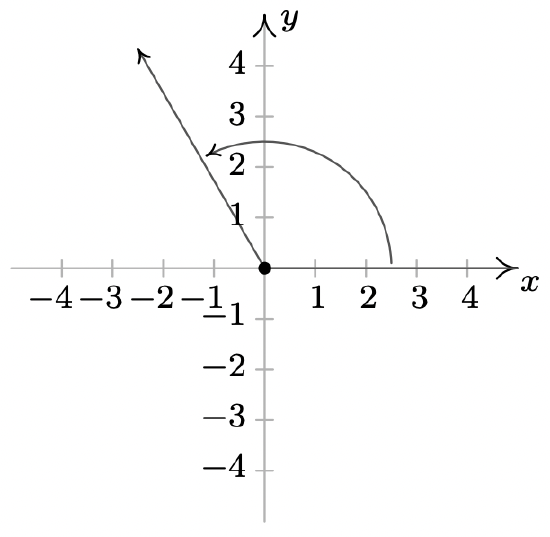
- \(405^{\circ}\) is a Quadrant I angle coterminal with \(45^{\circ}\) and \(-315^{\circ}\)
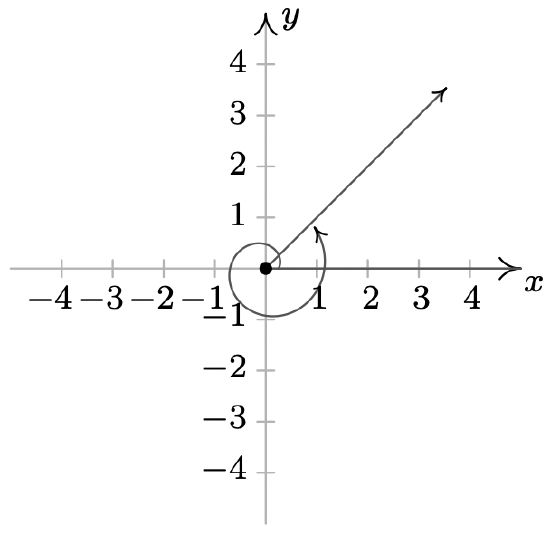
- \(-270^{\circ}\) lies on the positive \(y\)-axis coterminal with \(90^{\circ}\) and \(-630^{\circ}\)
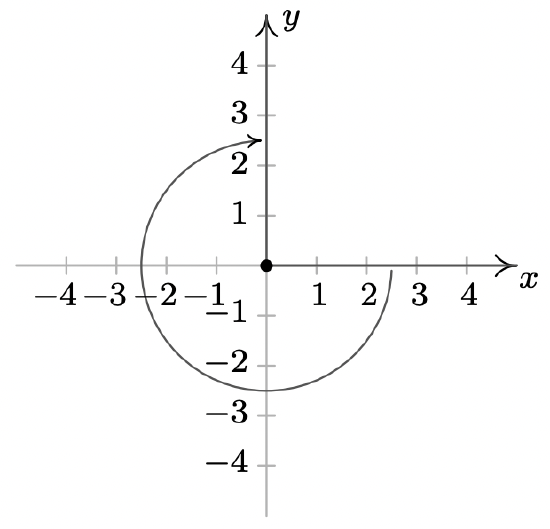
- \(\dfrac{5\pi}{6}\) is a Quadrant II angle coterminal with \(\dfrac{17\pi}{6}\) and \(-\dfrac{7\pi}{6}\)
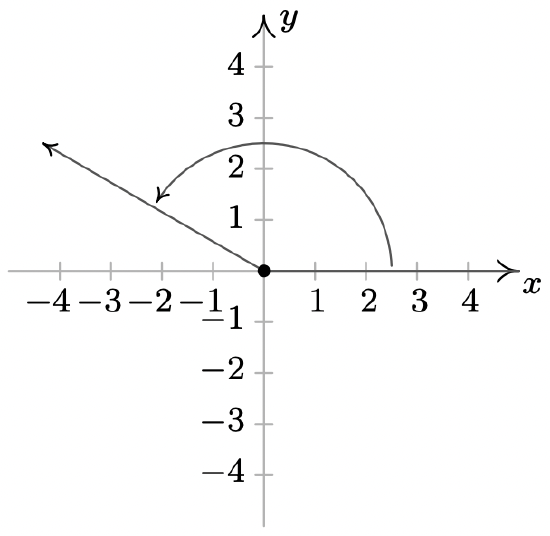
- \(-\dfrac{11\pi}{3}\) is a Quadrant I angle coterminal with \(\dfrac{\pi}{3}\) and \(-\dfrac{5\pi}{3}\)
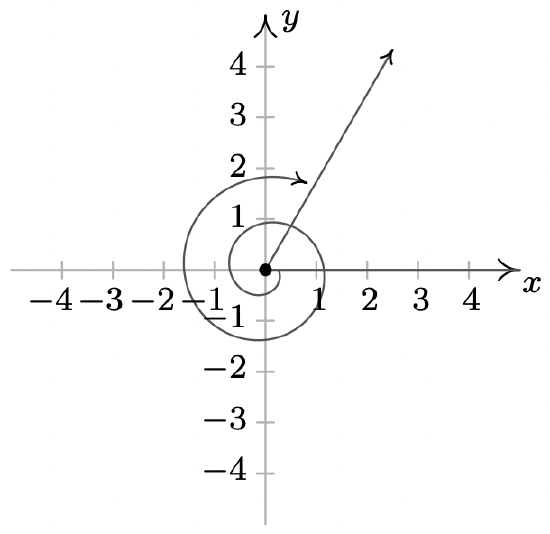
- \(\dfrac{5\pi}{4}\) is a Quadrant III angle coterminal with \(\dfrac{13\pi}{4}\) and \(-\dfrac{3\pi}{4}\)
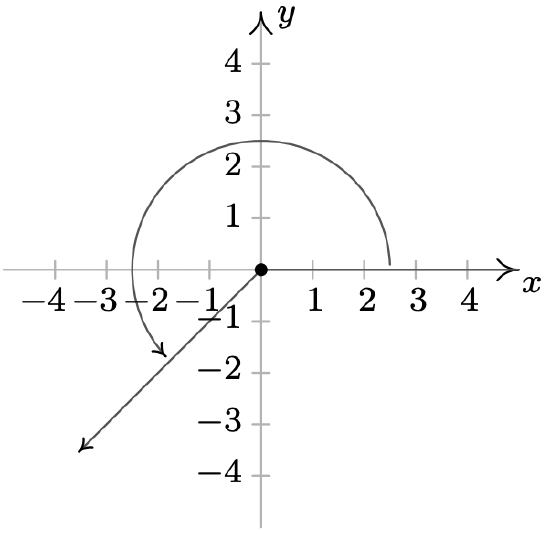
- \(\dfrac{3\pi}{4}\) is a Quadrant II angle coterminal with \(\dfrac{11\pi}{4}\) and \(-\dfrac{5\pi}{4}\)
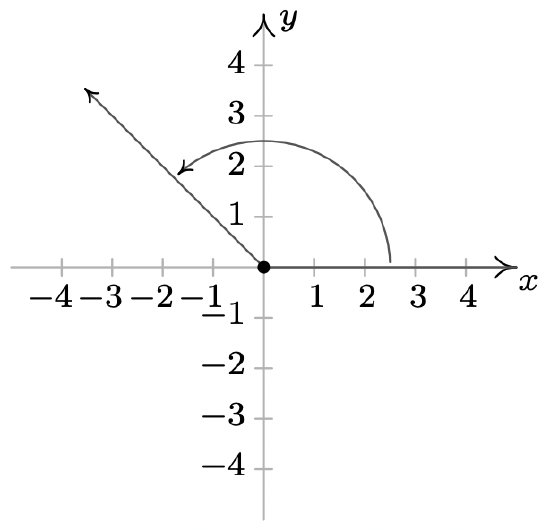
- \(-\dfrac{\pi}{3}\) is a Quadrant IV angle coterminal with \(\dfrac{5\pi}{3}\) and \(-\dfrac{7\pi}{3}\)

- \(\dfrac{7\pi}{2}\) lies on the negative \(y\)-axis coterminal with \(\dfrac{3\pi}{2}\) and \(-\dfrac{\pi}{2}\)
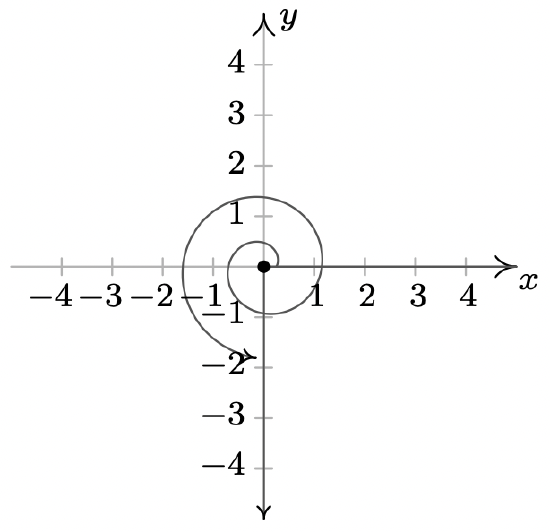
- \(\dfrac{\pi}{4}\) is a Quadrant I angle coterminal with \(\dfrac{9 \pi}{4}\) and \(-\dfrac{7\pi}{4}\)
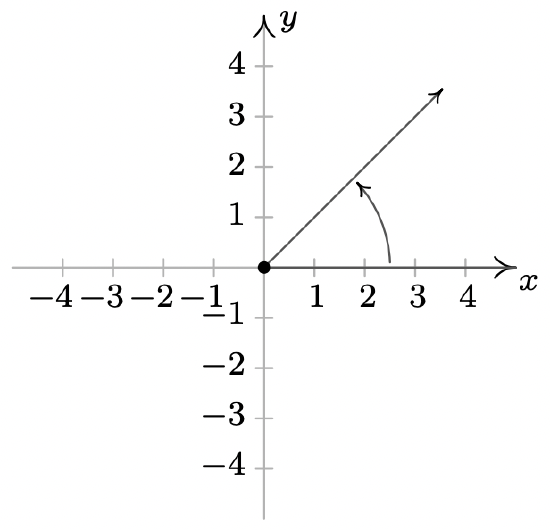
- \(-\dfrac{\pi}{2}\) lies on the negative \(y\)-axis coterminal with \(\dfrac{3\pi}{2}\) and \(-\dfrac{5\pi}{2}\)
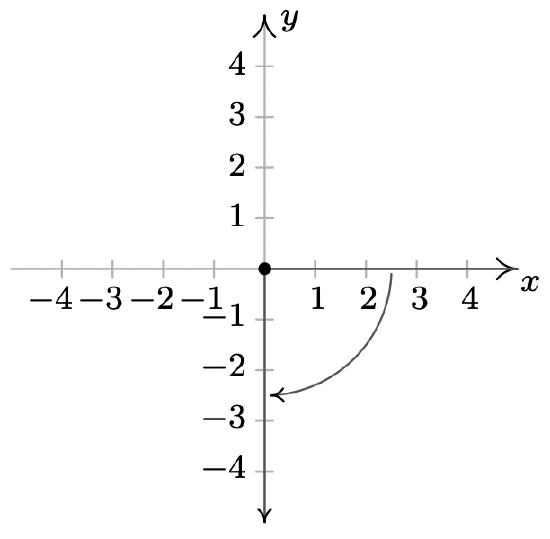
- \(\dfrac{7\pi}{6}\) is a Quadrant III angle coterminal with \(\dfrac{19 \pi}{6}\) and \(-\dfrac{5\pi}{6}\)
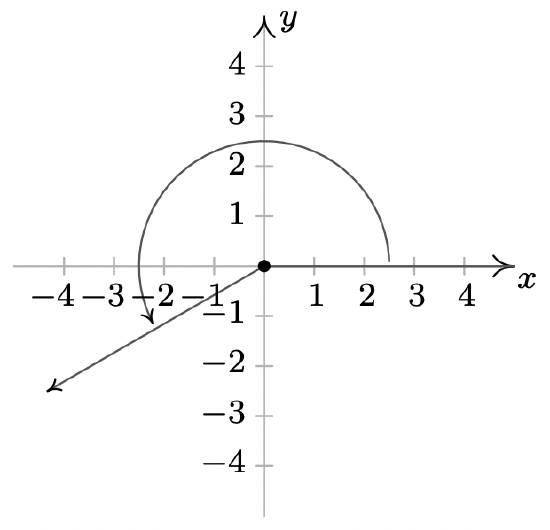
- \(-\dfrac{5\pi}{3}\) is a Quadrant I angle coterminal with \(\dfrac{\pi}{3}\) and \(-\dfrac{11\pi}{3}\)
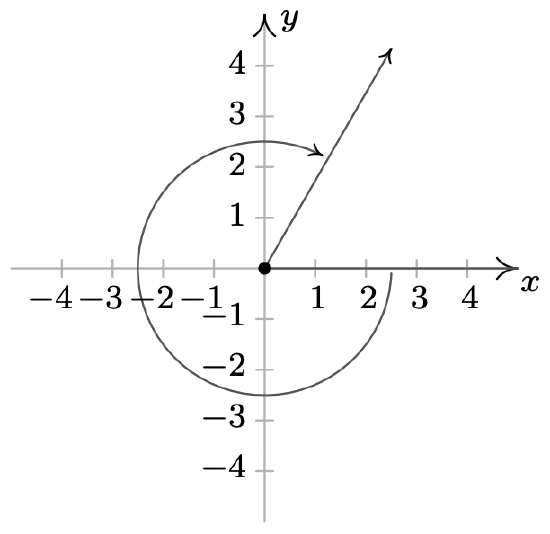
- \(3\pi\) lies on the negative \(x\)-axis coterminal with \(\pi\) and \(-\pi\)
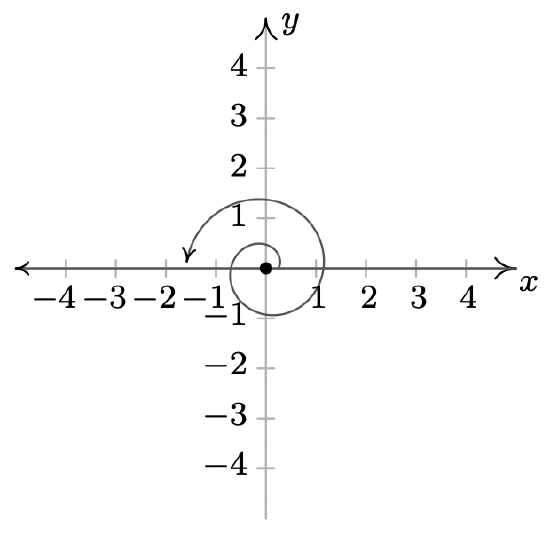
- \(-2\pi\) lies on the positive \(x\)-axis coterminal with \(2\pi\) and \(-4\pi\)
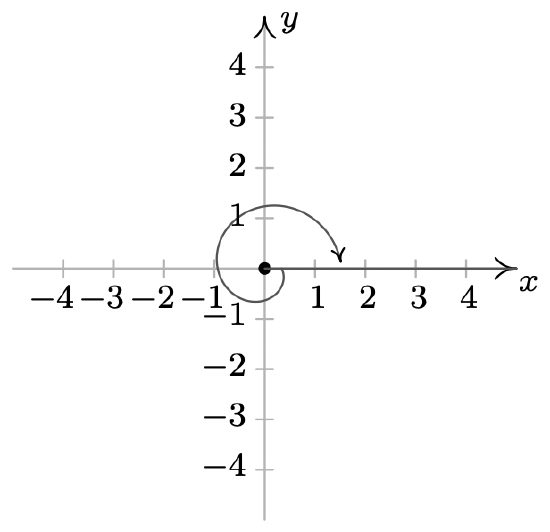
- \(-\dfrac{\pi}{4}\) is a Quadrant IV angle coterminal with \(\dfrac{7 \pi}{4}\) and \(-\dfrac{9\pi}{4}\)

- \(\dfrac{15\pi}{4}\) is a Quadrant IV angle coterminal with \(\dfrac{7\pi}{4}\) and \(-\dfrac{\pi}{4}\)
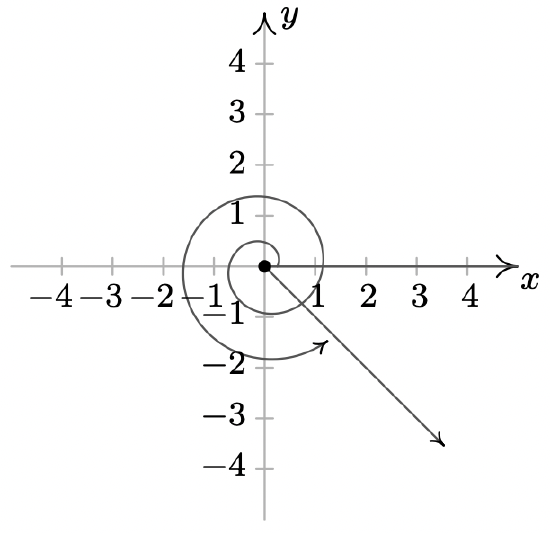
- \(-\dfrac{13\pi}{6}\) is a Quadrant IV angle coterminal with \(\dfrac{11\pi}{6}\) and \(-\dfrac{\pi}{6}\)
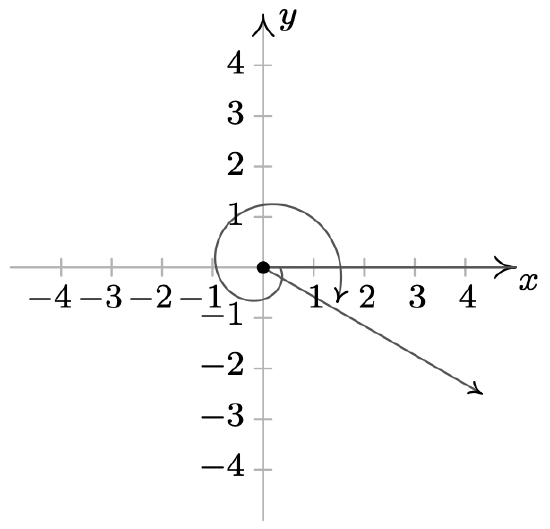
- \(0\)
- \(\dfrac{4\pi}{3}\)
- \(\dfrac{3\pi}{4}\)
- \(-\dfrac{3\pi}{2}\)
- \(-\dfrac{7\pi}{4}\)
- \(\dfrac{5\pi}{6}\)
- \(\dfrac{\pi}{4}\)
- \(-\dfrac{5\pi}{4}\)
- \(180^{\circ}\)
- \(-120^{\circ}\)
- \(210^{\circ}\)
- \(330^{\circ}\)
- \(60^{\circ}\)
- \(300^{\circ}\)
- \(-30^{\circ}\)
- \(90^{\circ}\)
- \(t = \dfrac{5\pi}{6}\)
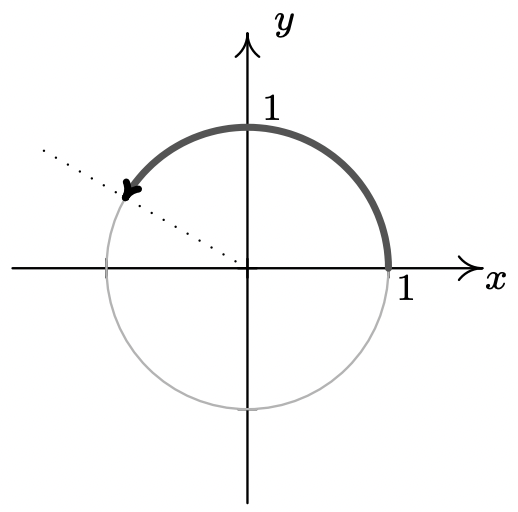
- \(t = -\pi\)
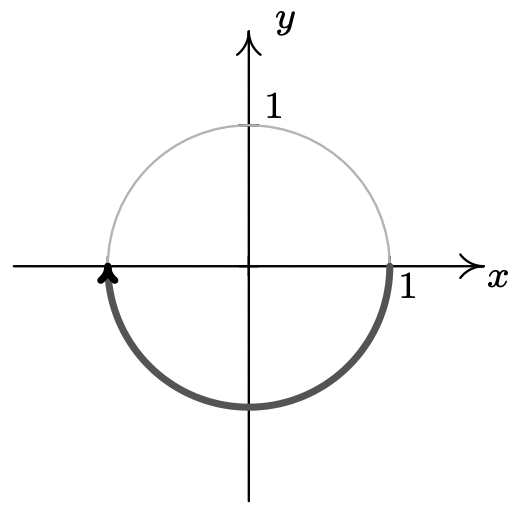
- \(t = 6\)
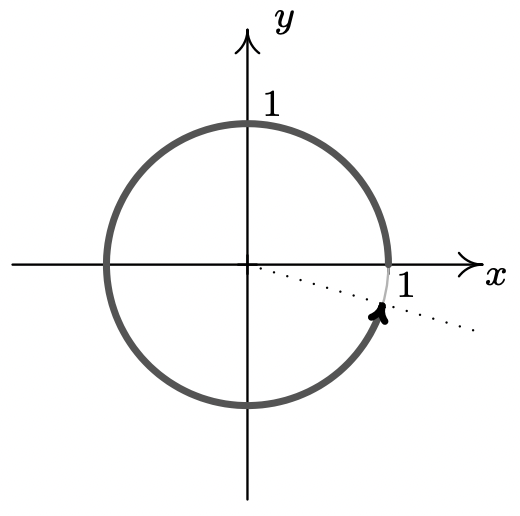
- \(t = -2\)
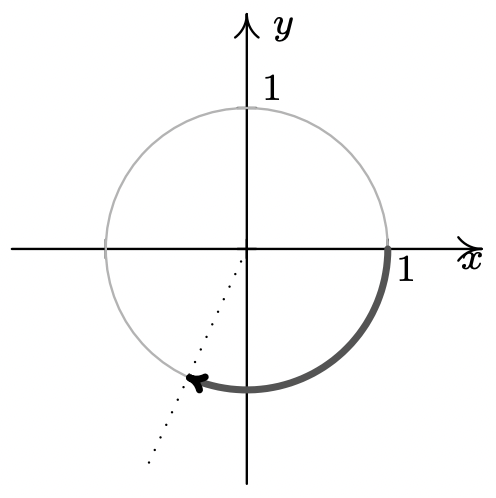
- \(t = 12\) (between 1 and 2 revolutions)
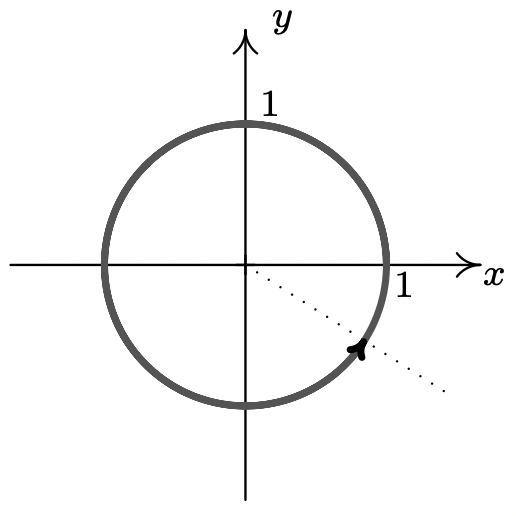
- About 30.12 miles per hour
- About 6274.52 revolutions per minute
- About 3.33 miles per hour
- About 53.55 miles per hour
- 70 miles per hour
- About 4.32 miles per hour
- \(12\pi\) square units
- \(6250\pi\) square units
- \(79.2825\pi \approx 249.07\) square units
- \(\dfrac{\pi}{2}\) square units
- \(\dfrac{50\pi}{3}\) square units
- \(38.025 \pi \approx 119.46\) square units

